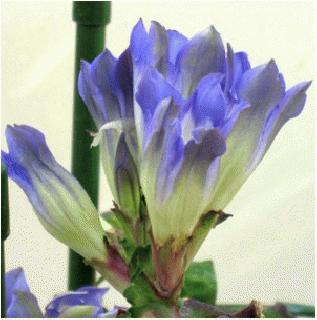

(G) Relative luciferase activities after co-bombardment of Arabidopsis leaves with Gal4DB-fused At2g36080 effectors and the Pro35S:Gal4:LUC reporter gene. (F) Schematic representation of the Gal4-LUC reporter gene (Fujimoto et al., 2000) and Gal4DB effectors (Fujimoto et al. Ω, translation enhancer sequence derived from tobacco mosaic virus. (A) Schematic representation of the At2g36080 constructs and derivative. The isolation of a novel transcriptional repressor and its repression domains. 2002) by 90% in co-bombarded leaves of Arabidopsis ( Fig. Transient expression assays also showed that the At2G36080 effector fused to the yeast Gal4 DNA-binding domain (GalBD Pro35S:Gal4DB-At2g36080) reduced the expression of a Pro35S-Gal4:LUC reporter gene (Hiratsu et al. These observations suggested that the product of At2g36080 might be a repressor. Both of the transgenic lines with a mildly abnormal phenotype had narrow leaves and bushy rosettes ( Fig. Both Pro35S:At2g36080SRDX and Pro35S:At2g36080 plants exhibited cotyledon fusion and loss of shoot apical meristem (SAM), and the seedlings had abnormally short roots with long root hairs ( Fig. 2006), had a phenotype similar to that of the corresponding chimeric At2g36080 repressor-expressing lines ( Pro35S:At2g36080SRDX Figs. We found that plants that ectopically expressed At2g36080 ( Pro35S:At2g36080), which encodes a plant-specific B3 DNA-binding domain transcription factor closely related to NGA ( Supplementary Fig. In an attempt to identify novel transcriptional repressors, we compared the phenotypes of chimeric repressor-expressing and transcription factor-overexpressing plants for a variety of transcription factors. In contrast, when a transcription factor encodes a repressor, the phenotype of the chimeric repressor plants should be similar to that of plants that overexpress the repressor but different from those with the corresponding loss-of-function alleles, as reported previously for AtMYBL2 (Matsui et al. It was reported previously that transgenic plants that expressed a chimeric repressor, in which the EAR repression domain (SRDX) was fused to a transcription factor, exhibited phenotypic changes similar to those of plants with the corresponding loss-of-function alleles but unlike those of plants that overexpressed the factor itself (Hiratsu et al. Identification of these putative repression domains and the isolation of novel families of transcriptional repressors would help to clarify the various mechanisms that are controlled by transcriptional repressors in plants. This observation suggests the presence of unidentified groups of transcriptional repressors with novel repression domains. We showed recently that AtMYBL2 is an active transcriptional repressor but that its repression domain does not contain the LXLXL motif (Matsui et al. In Arabidopsis, approximately 10% of plant transcription factors might be transcriptional repressors and it is likely that the possible extent of the contribution of repressors to the regulation of plant functions might be large (Mitsuda N. Thus, the EAR motif is not specific to a small family of transcription factors. The EAR motif has been found in various plant proteins, which include AUX-IAA, BZR1, class II ERF and a number of C 2H 2 zinc-finger proteins, such as SUPERMAN (Ohta et al. The conserved sequence of the EAR motif in various plant transcription factors is LXLXL (where X can be any amino acid), and it is amphiphilic (Ohta et al. The core sequence of this repression domain consists of only six amino acids, which are sufficient for the repressive activity and which, upon fusion to transcriptional activators, converts them into strong repressors (Hiratsu et al. The ERF-associated amphiphilic repression (EAR) motif was identified previously as a repression domain in plants (Ohta et al. Moreover, both activators and repressors of transcriptional also play important roles in the regulation of gene expression. Gene expression in plants is regulated predominantly at the transcriptional level, and numerous transcription factors act as key regulators of various biological processes.


 0 kommentar(er)
0 kommentar(er)
